
Shelter statistics may not seem like the most exciting topic to consider, but is in my opinion one of the most important tools you have in your belt when it comes to shelter animal health.

Shelter statistics may not seem like the most exciting topic to consider, but is in my opinion one of the most important tools you have in your belt when it comes to shelter animal health.

These proceedings present data related to the question of how long to wait after administering a single injection antimicrobial before applying success/failure criteria. More accurately, we will evaluate success/failure and mortality data based on administering a uniform regimen and then waiting different periods before applying success/failure criteria, and the animal subsequently being eligible for further therapy.

Small ruminants constitute a rewarding component of a mixed or rural veterinary practice. In such practice scenarios, certain common medical disorders of small ruminants may be encountered on a fairly regular basis. The following cases are valuable teaching cases because they involve differential diagnoses that are commonly encountered in small ruminant practice.

Developing herd health programs for cow-calf operations can be time consuming but rewarding for both the producer and the veterinarian if done appropriately. However, many producers think of a herd health program as only a vaccine program. Interestingly, the vaccination schedule and the vaccines that will be used constitute the smallest portion of a true herd health program.

This checklist serves as a starting point for evaluating your applications of antimicrobials in food animals.

Increased population density leads to animal STRESS, a greater risk of disease introduction, higher contact rate, reduced air quality, exhausted resources, staff stress and commonly compromises in housing and husbandry. Unfortunately, crowding in shelters is not uncommon, either due to insufficient facilities, or a well-intended attempt to decrease euthanasia by housing more animals.

Antimicrobial efficacy in cattle can be evaluated through clinical studies including a negative control group. To be included here, the study must have specified that the subjects were randomized, the evaluators were masked to treatment, and that statistical analysis was applied. Much of the data were compiled from Food and Drug Administration Freedom of Information (FOI) summaries for veterinary drug approvals.

For those of us who are tolerating bawling calves for four or five days in a row, tolerating buller rates of over a half a percent, please listen and see if some of these things might be helpful.
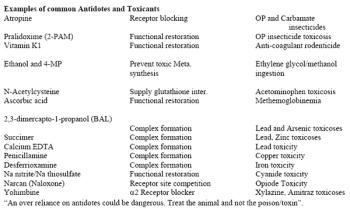
Oral exposure to toxicants among small animals (pets) is the most common. Biological activities are graded, and, are based on toxicants reaching their sites of action (effectors) in biological system at a sufficient concentration and duration. Intensity of a biological effect is dose related. Basic pharmacokinetic/toxicokinetic principles of toxicants become essential in addressing toxicity. Toxicant concentrations at effector sites are based on absorption, distribution, metabolism, and excretion of individual toxicants.
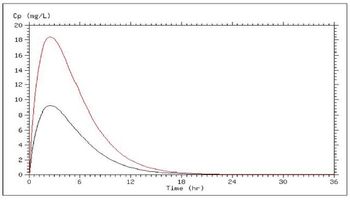
In most cases, we administer drugs at a different site than we want to drug to act. Understanding how drugs get to their site of action and how long they stay there is essential to making therapeutic decisions about which drug, what route, how much, how often, and for how long.

Chronic kidney disease (CKD) is a common clinical diagnosis in middle-aged to geriatric cats and dogs that may significantly affect the quality of life of both the patients and their owners. Although "old age" is not a disease, it is a time when many diseases are more likely to occur, often concurrently.
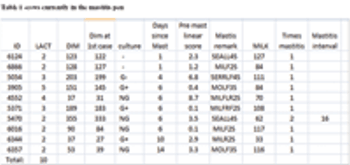
We have talked about supervision and finding treatment failures and conditions that have low odds of successful treatment in an efficient manner that is cost efficient for the dairy, good welfare for the cow and work we'd like to do. These are hollow words unless it can be delivered to the cows in need on a timely basis.

Trichomoniasis, or "trich," is a disease that can cause devastating reductions in the percentage of cows exposed to a bull that successfully calve. The disease is caused by a protozoan parasite, Tritrichomonas foetus and the organism is transmitted by the act of mating.
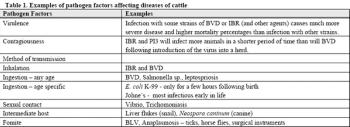
Pathogens differ in their virulence, contagiousness, and their modes of transmission. These differences exist not only between pathogens, but for virulence and contagiousness, can also differ between strains of the same species of pathogen.

Incidence of feedlot lameness varies by feedlot from .03% to 2.3% of cattle inventory on a health data base that includes 5,540,000 cattle in feedlots that vary in capacity from 5000 to 80,000 head. The average lameness incidence is .51%.

Anemia is a common clinical finding in both human and veterinary patients with chronic kidney disease (CKD). Anemia has been reported as a clinical complication in 80-90% of human dialysis patients, and in 32-65% of cats with CKD.

Agents (physical, chemical or biological) designed to kill pests that interfere with the comfort, health or economic wellbeing of man. Accompanying their beneficial effects, illnesses and deaths in man and animal alike, have been reported. Recorded use of compounds in the control of pests goes back to 1000 BC, when sulfur was used for such purpose. Since then their have been continued development of more effective and safe pesticides. Currently in use today are > 600 pesticides, constituting 15,000 compounds in 3,500 formulations.

Pets' eating and grooming habits, species inherent sensitivities to certain chemical/foods, and owners' attitudes are helpful in preventing accidental exposures. Similar hand-to-mouth behavior observed in children is the expected with pets. All precautions – properly store all hazardous chemicals, personal human medication, read medication labels, and know the need for, and seek immediate veterinary care - should be taken in preventing access of pet to hazardous substances.

A lingering human impression that most synthetic chemicals/compounds are unsafe and those of natural origin are safe remains un-substantiated. Of an estimated 30,000 plant species (wild and cultivated) found in North America, approximately 700 species have been reported toxic to animals. These plants are toxic on account of chemicals found in them, which are toxic to animals on ingestions. These components (alkaloids, glycosides, phenols, phyto estrogens, resins etc.) are structurally and functionally diverse.

One can usually find many sources of information about drugs: FDA website, drug company websites and technical reports, VIN, journals, trade magazines, and so on. The important skill required of veterinarians is to assess that information to determine its usefulness in your daily practice.

This morning we're going to talk about our least favorite topic – sick cattle. Sick cattle are not fun to deal with, but we're always going to have some of them. I want you to understand that our philosophy should be to invest time at strategic points of the production cycle to reduce time spent at hospitals.

"Old age" in not a disease but is the sum of the deleterious effects of time upon the cellular function, microanatomy and physiology of each body system. These biological aging changes manifest in progressive deteriorations in physical condition, organ function, mental function, and immune response, but not necessarily correlating with the patient's actual chronological age.
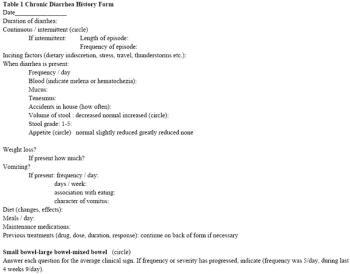
Chronic diarrhea is a common problem in dogs and cats. Diagnosis can be difficult and challenging for veterinarians due to the large number of possible causes of chronic diarrhea. Following a logical and thorough diagnostic plan is essential to efficiently arrive at an accurate diagnosis. This seminar will review the author's approach to the diagnosis of chronic diarrhea.
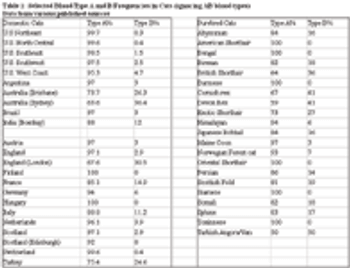
There are three well-known, clinically important blood groups in cats: A, B, and AB.1-2 Despite the nomenclature, the antigens in the feline AB blood group are not serologically related to the human ABO blood group antigens.

Immunosuppressive therapy in dogs and cats is used to treat a wide range of immune-mediated and inflammatory diseases. Immunosuppressive therapy is best understood, and explained, in the context of the specific disease that is being treated. In order to put the principles of treatment into a clinical context, I will therefore concentrate on treatment of immune-mediated blood disorders.

Dietary management is a vital component of successful treatment of many Gastrointestinal (GI) diseases. Some conditions can be managed with diet alone, while others require concurrent medical management.
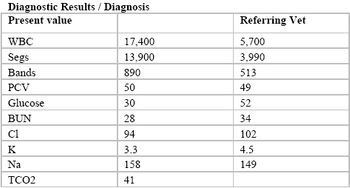
The first step in the approach to the acutely vomiting dog is to determine that vomiting and not regurgitation is present. Vomiting is associated with signs of nausea (depression, salivation, and frequent swallowing,) that is followed by abdominal contractions prior to the expulsion of material.

Chronic vomiting (intermittently or continuously for at least 7 days) in dogs and cats is a common and frustrating problem for clients and veterinarians. Because many diseases cause chronic vomiting, a thorough evaluation must be performed to arrive at an accurate diagnosis.

To the owner, integument changes are the most obvious sign of aging. Aging of the skin and adenexa is a complex subject influenced by a combination of interrelated causative factors including wear and tear, cumulative cell damage from ionizing irradiation, and genetically preprogrammed cell changes.

This presentation concerns the survival and subsequent recovery of a small feline veterinary practice from two events, either of which could have easily shuttered this business. The first event was a devastating fire set by an arsonist which not only resulted in the loss of animal life but which also rendered the business a total loss. The second event was Hurricane Katrina, which literally and functionally destroyed New Orleans and its business environment for months.